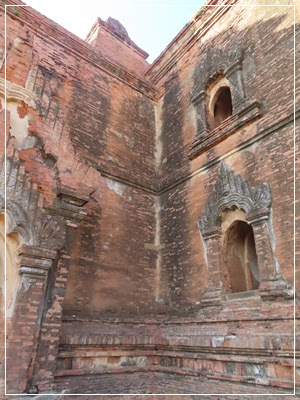15th DECEMBER 2019 ~ This was the temple which had a very interesting story behind it. Being the largest temple on the plain of Bagan, Dhamayan Gyi Temple's construction was never actually completed. The temple was built by King Narathu who only became a successor to the throne after killing both his father and brother. He built the holy building to seek forgiveness for his past sins. Legend has it that he was either murdered as a revenge after King Narathu killed one of his wives, or he was killed by invaders from Sri Lanka.
As usual there were Buddhist statues in the temple. However, the dark and damp corridors were quite eerie for me.
Built in 1170, we just hope that the temple could resist the weather and cruel nature so that the coming generation could see the structure and learn the value from tragic story behind it.
[MY MYANMAR TRIP MAIN PAGE]

































































